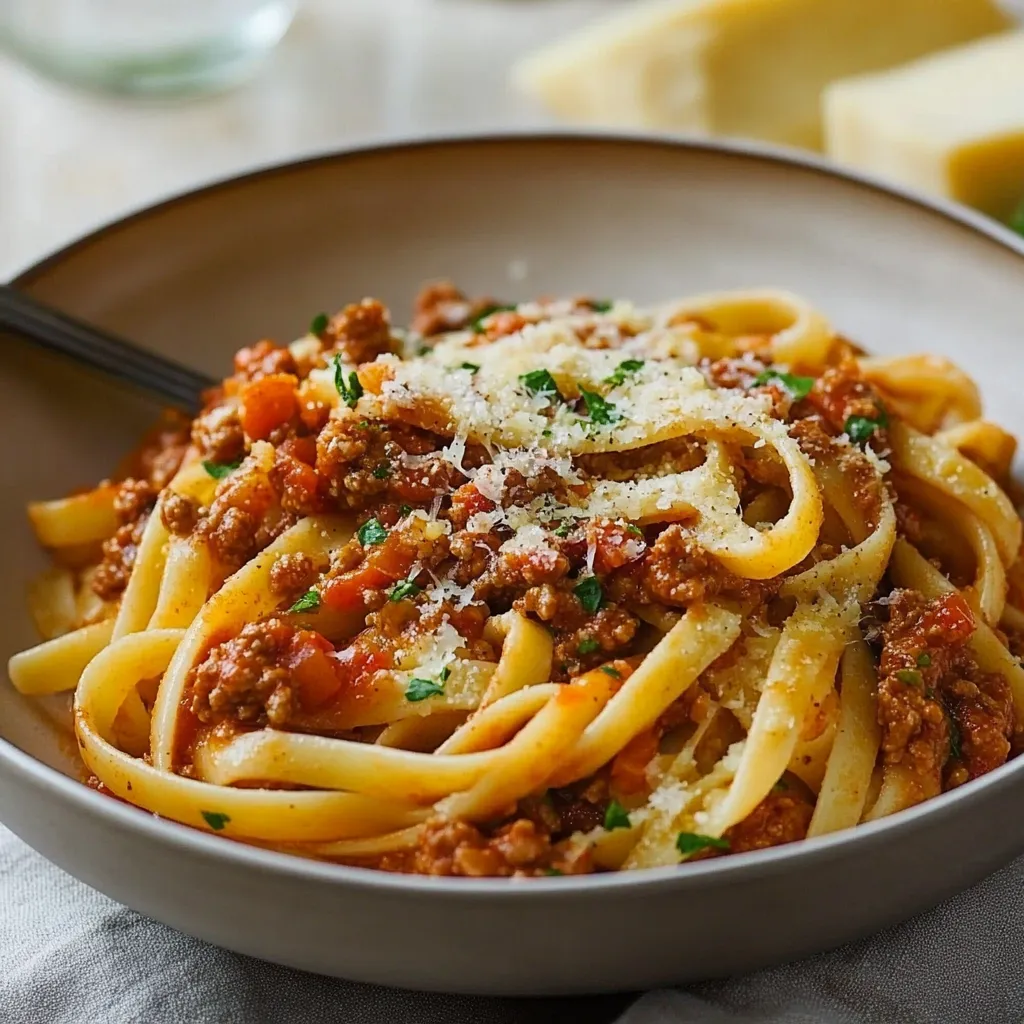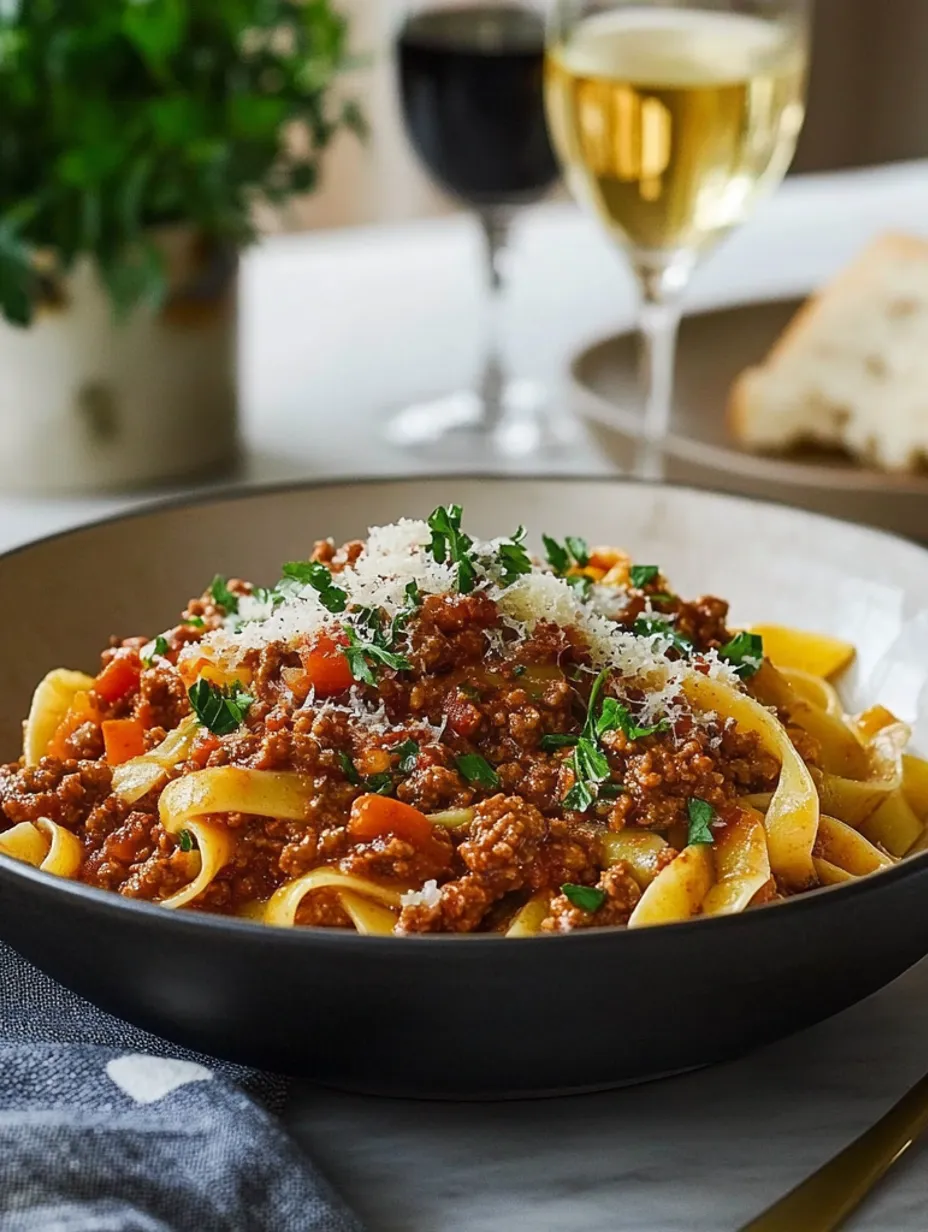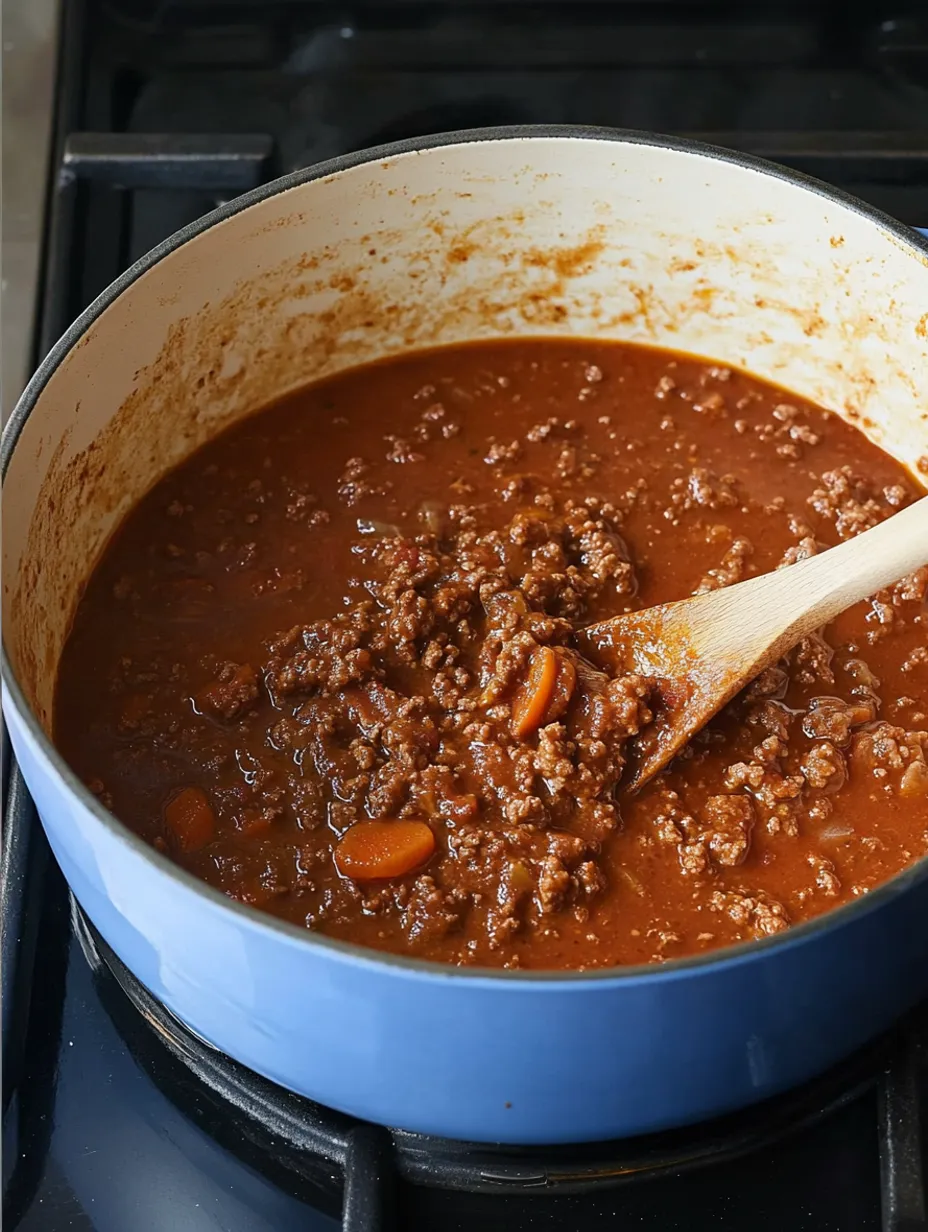 Pin it
Pin it
Rolling waves of rich, meaty aroma fill my kitchen every Sunday afternoon as my Bolognese sauce simmers away, bringing back memories of watching my grandmother stir her own version of this classic Italian comfort food while teaching me that patience makes all the difference between a good sauce and an extraordinary one. The transformation of simple ingredients into something that makes everyone in the house drift toward the kitchen, asking when dinner will be ready, reminds me that some recipes become part of our family story.
Essential Elements
- Ground beef needs enough fat to stay tender and flavorful.
- Pancetta brings depth that regular bacon just can't match.
- Fresh vegetables create the perfect flavor foundation.
- Good red wine adds complexity worth waiting for.
- Real Parmigiano-Reggiano makes all the difference.
- Fresh pasta turns this into something extraordinary.
 Pin it
Pin it
Creating Sauce Magic
- Foundation Building:
- Start with that holy trinity of onions, carrots, and celery, letting them soften slowly until they're practically melting into the pot.
- Meat Mastery:
- Brown your meat patiently, letting those crispy bits form on the bottom of the pan because that's where the magic happens.
- Wine Symphony:
- Add your wine and let it reduce, watching it pick up all those wonderful flavors from the bottom of the pot.
- Simmer Secrets:
- Let everything bubble away gently, giving the sauce time to develop those deep, rich flavors that make people ask for seconds.
Perfect Pasta Partnership
Through countless Sunday dinners and family gatherings, I've discovered that while the sauce is important, choosing the right pasta makes a huge difference. Those wide, flat noodles catch the sauce in all the right ways, creating perfect little pockets of flavor in every bite. Some nights I'll splurge on fresh pasta from the Italian market, while other times I'll stick with dried - either way, that sauce makes everything taste special.
Getting The Balance Right
The magic happens somewhere between the third and fourth hour of simmering, when the meat becomes impossibly tender and the sauce develops that rich, velvety texture that clings to each strand of pasta. That's when I know dinner's going to be something special, worth every minute of waiting.
Making It Your Own
Over the years, I've played with the recipe - sometimes adding a splash more wine on cold winter nights, or throwing in fresh herbs from my garden in summer. My mother adds extra carrots for sweetness, while my sister swears by more pancetta - somehow each version becomes someone's new favorite.
 Pin it
Pin it
Kitchen Wisdom
Let your pot tell you when it's time to stir.
Trust that the sauce will thicken just when it should.
Remember that good things take time.
Every time I make this Bolognese, whether for a quiet family dinner or a house full of friends, I think about all the stories and conversations that have happened around pots of this sauce. It's become more than just dinner - it's our Sunday tradition, our comfort food, and our way of showing love, one bowl at a time.
Frequently Asked Questions
- → Can I make the sauce ahead of time?
- Yes, make it up to 3 days ahead and store in the fridge, or freeze for up to 3 months.
- → What's the best pasta to use?
- Fresh pasta works best, but any pasta shape works well. Try Buitoni fresh pasta from the refrigerated section.
- → Why add milk to the sauce?
- Milk adds richness and helps tenderize the meat for a silky, authentic Bolognese sauce.
- → Can I use different meat?
- Traditional Bolognese uses beef and pancetta, but you can use a mix of beef and pork, or just ground beef.
- → How do I know when it's done?
- The sauce should be thick and the meat should be very tender after about 2 hours of simmering.
